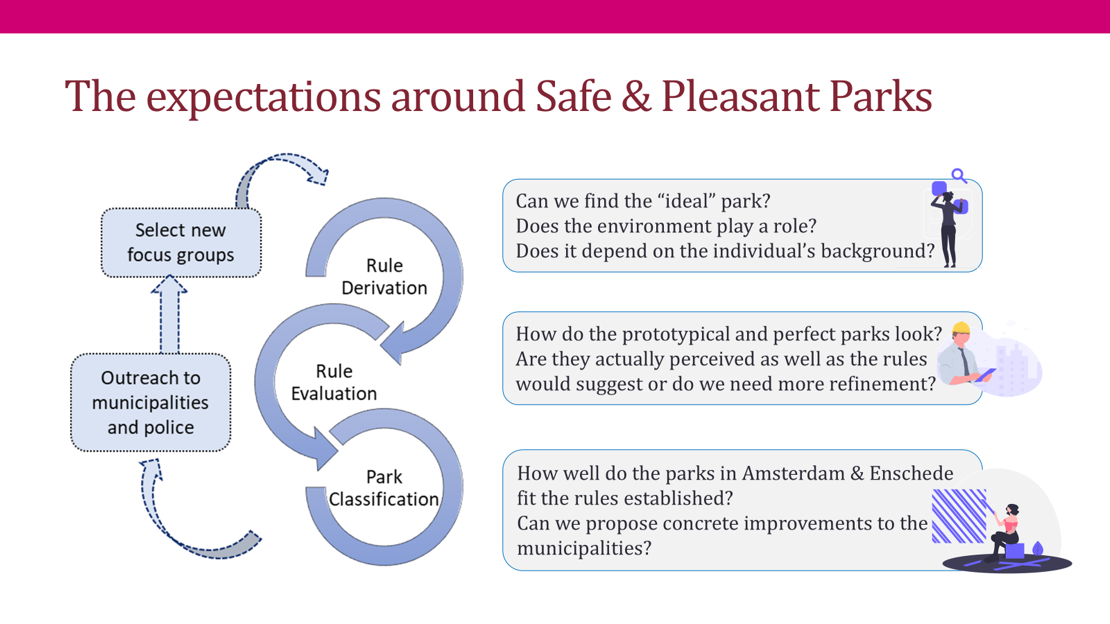Safe and Pleasant Parks
In this project we want to investigate a park’s perception of safety and pleasantness in relation to different target groups. Because of a Park’s divergent perception (e.g., from leisure during the day to potential illegal activities at night), public parks occupy a special role in the public eye. Inspired by citizen science methodologies, the research emphasizes an inclusive and playful approach to public park design by harnessing the motivational pull of video games as a starting point. For example, we will utilize a digital city-building game, so that each study participant can design their own "perfect” park. The goal is to evaluate individual approaches to designing subjectively safe and appealing public spaces. Depending on the individual’s characteristics (e.g., gender, physical capabilities, past experiences, being a parent) different aspects of park-design can be in focus. Based on these results we will extract general design-guidelines and rules that we can use to design “prototypically safe” parks for each perspective.
This project is divided into three distinct project phases, each with their respective results and outputs for the next phase. At the end of the project, we will hold a workshop including municipalities and safety workers to discuss the potential real-world implications of our results. The goal of the first phase is to evaluate individual approaches to designing subjectively safe and appealing public spaces. We expect to uncover notable differences between what is perceived safe and appealing in a densely populated city environment such as Amsterdam vs. the more rural Enschede. Based on these results we will extract general design-guidelines and rules that we can use to design “prototypically safe” parks for each perspective. Following this in phase 2, we will generate “prototypical safe” park designs which will be evaluated again by the participants. This step is crucial to assess and refine the design-guidelines. We expect to be able to present a set of park-design rules that lead to a safe and appealing park for a sample similar to the one gathered in Phase 1. These prototypically safe parks will be discussed with stakeholders form municipalities, citizens and emergency services to get their input on the peoples’ opinions. In a final application step, we will use the extracted rules to classify and rate existing parks in Amsterdam and Enschede. This requires the analysis of satellite imagery as well as actually visiting the parks in person. In the end, a list of parks in the cities will be compiled together with their respective scores. This list will be discussed with stakeholders form municipalities, citizens and emergency services.

This project is initially funded by the Secure Societies Seed Funding Program as part of the VU-UT Collaboration.
For more information please contact: Maximilian A. Friehs
